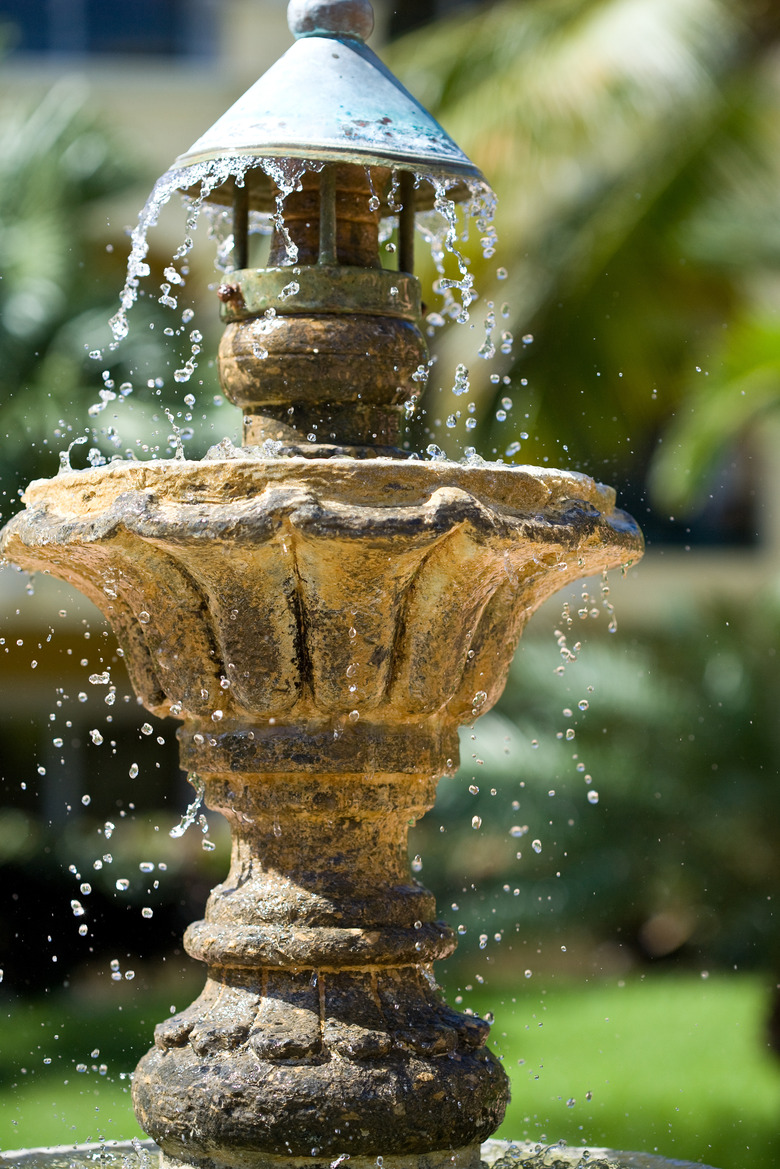Keeping Algae Out Of Fountains Without Harming Dogs
Algae, of the taxon Eukaryota, is a common problem in fountains in all U.S. Department of Agriculture plant hardiness zones. These photosynthetic organisms occur in most habitats including oceans, freshwater, aquariums, sand, snow and yes, even fountains. While it's possible to use harsh chemicals to prevent the buildup of algae, these additives are not always safe for thirsty pets who may sneak a few gulps from the fountain. You can take a few steps to keep algae out of fountains in a pet-safe way.
Step 1
Step 1
Place your fountain in a shaded area. Algae grows quickly in bright light, and you can help reduce some of this growth by keeping your fountain out of direct sunlight
Step 2
Step 2
Change the water in your fountain once a month to prevent the buildup of algae. Small algae spores may begin to form in your fountain before you even notice them, but this preventative measure will ensure that they do not grow and spread
- Algae, of the taxon Eukaryota, is a common problem in fountains in all U.S. Department of Agriculture plant hardiness zones.
- Algae grows quickly in bright light, and you can help reduce some of this growth by keeping your fountain out of direct sunlight Change the water in your fountain once a month to prevent the buildup of algae.
Step 3
Step 3
Move your fountain away from trees or thick vegetation. Leaves and twigs that contain algae spores can fall into your fountain and transfer the algae into the water.
Step 4
Step 4
Use distilled water — not tap water — to fill your fountain. Tap water contains minerals and additives that encourage algae growth, such as high levels of phosphates.
Step 5
Step 5
Remove all debris such as dirt, sand, leaves and grass out of your fountain regularly to prevent the pump from clogging, which can encourage algae growth.
Step 6
Step 6
Clean your fountain once every one to three months with a scrub brush, dish detergent and warm water. Small fountains will need more frequent cleanings, while large fountains may only need to be cleaned once or twice per operating season. To clean, drain your fountain and scrub the base thoroughly with warm water and a quarter-sized dot of detergent. In addition, take your pump apart and clean the inside to remove any algae or mineral deposits. Rinse your fountain thoroughly until no soapy bubbles remain.
- Move your fountain away from trees or thick vegetation.
- Remove all debris such as dirt, sand, leaves and grass out of your fountain regularly to prevent the pump from clogging, which can encourage algae growth.
Warning
Do not allow detergent to remain in your fountain after cleaning; this can get into the water and could possibly be harmful to your pet.
Things Needed
- Distilled water
- Scrub brush
- Dish detergent
